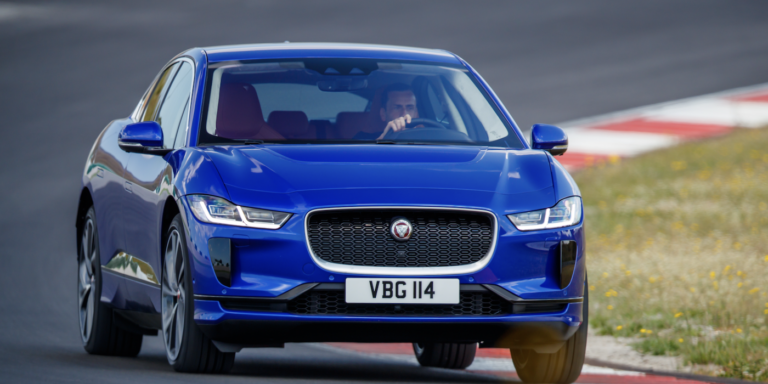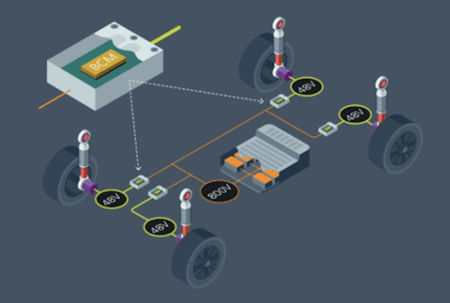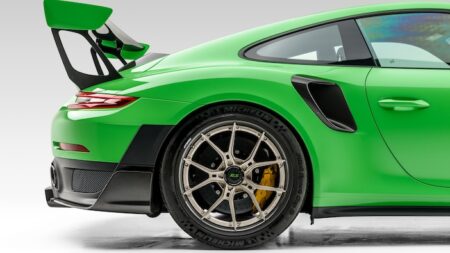A shortlist full of talent and innovation, evaluated by a well-informed international jury with experience of the latest vehicles, makes for a great awards program. 2019 has proved to be another great year for the Vehicle Dynamics International Awards…
Car of the year
The proof of dynamics theory and engineering comes to light when applied to production vehicles. So which vehicles have impressed with their dynamics setup over the past 12 months? This category was varied this year, with the dynamic qualities of a wide range of vehicles assessed, from mid-market best-sellers like the BMW 3 Series and Ford Focus, to the lightweight Alpine A110, to the luxury BMW 7 Series. The rise in popularity of SUVs was reflected in the 2019 shortlist, expressed in different forms, from the increasingly refined Jeep Wrangler, to the Lamborghini Urus which sets a new benchmark in the performance SUV sector, to the intelligent Jaguar I-Pace, to the Rolls-Royce Cullinan, which offers a stately feel in the roughest of conditions.
Winner: Jaguar I-Pace EV400
The I-Pace marks Jaguar’s entry into the EV revolution, designed to deliver sustainable sports car performance, next-generation artificial intelligence (AI) technology and five-seat SUV practicality. A clean-sheet design, it harnesses new battery electric technology with an architecture engineered from the outset to optimize performance, aerodynamics and interior space.
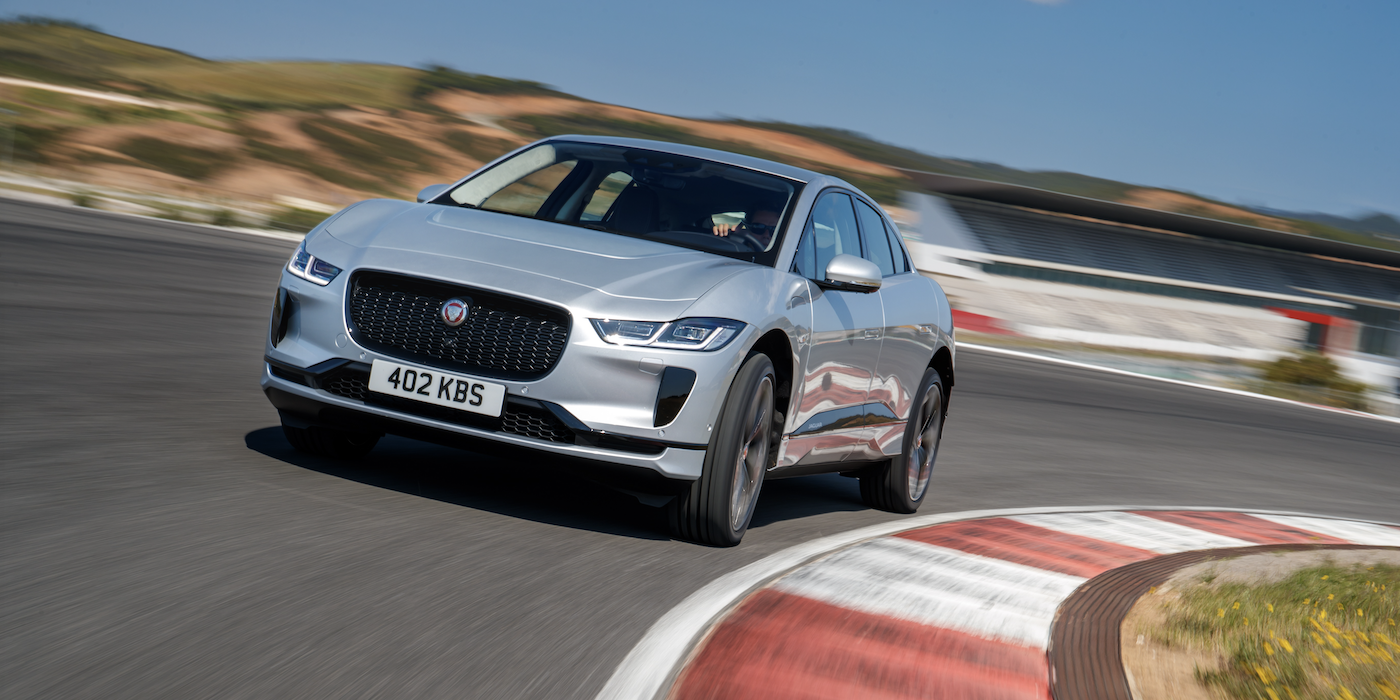
Each axle features two Jaguar-designed electric motors – which feature driveshafts passing through the motors themselves for compactness – producing combined performance of 400PS and 696Nm, and all-wheel-drive, all-surface traction. The high torque density and high-energy efficiency characteristics of the motors deliver sports car performance, with a 0-62mph (100km/h) time of just 4.8 seconds. However, that impressive and instantaneous performance is matched with exceptional ride comfort and engaging driving dynamics.
Advanced riveting and bonding technology has been used in the bespoke EV aluminum architecture to create a light, stiff body structure. Together with the structural battery pack, it has a torsional rigidity of 36kNm/degree – the highest of any Jaguar.
The battery is placed centrally between the two axles, and as low down as possible, with a seal between the housing and the underfloor: a location that enables 50:50 weight distribution and a low center of gravity. Combined with the advanced double wishbone front and integral link rear axle with (optional) air suspension and configurable adaptive dynamics, the I-Pace delivers agile handling and impressive levels of ride comfort.
Padraic Deane, managing editor, Automotive Publications, Ireland: “Wow, there were some very impressive cars on the shortlist this year. In the end I chose the Jaguar I-Pace. What a wonderful success Jaguar has made of their first all-electric car. New-from-the-ground-up, the I-Pace delivers on styling, sustainable sports car performance, and practicality. The I-Pace features the highest torsional rigidity of any Jaguar. Finally, the claimed 298-mile range and a promised power top up from 0–80% is possible in 45 minutes.”
And here’s what D Ralf Speth, CEO of Jaguar Land Rover has to say about the car: “Where other companies talk about the future, we build it. We have torn up the rule book to create the newest member of the PACE family, the all-electric Jaguar I-PACE. With zero tailpipe emissions, no CO2 and no particulates, it moves us dramatically closer to our vision of a clean, safe and sustainable future.”
Highly commended: Alpine A110
The Alpine A110 was only just beaten in this category. The A110 is engineered to be lightweight, agile and rewarding to drive, following the same basic technical principles that underpinned the original A110 Berlinette, which twice won the Monte Carlo Rally in the 1970s, not by being the most powerful car on the event, but by being the most nimble. The new A110 prioritizes driving pleasure above lap times and outright acceleration figures, with an aluminum chassis and bodywork forming the basis of its agility, and help bring weight down to 1,080kg (with fluids).
The A110 also uses a sophisticated double wishbone suspension arrangement for sound ride and handling, while the 44:56 front to rear weight distribution gives perfect balance for a mid-engined sports car. With a flat underbody and functional rear diffuser, the car’s carefully crafted aerodynamics eliminate the need for a rear spoiler, preserving the A110’s timeless design.
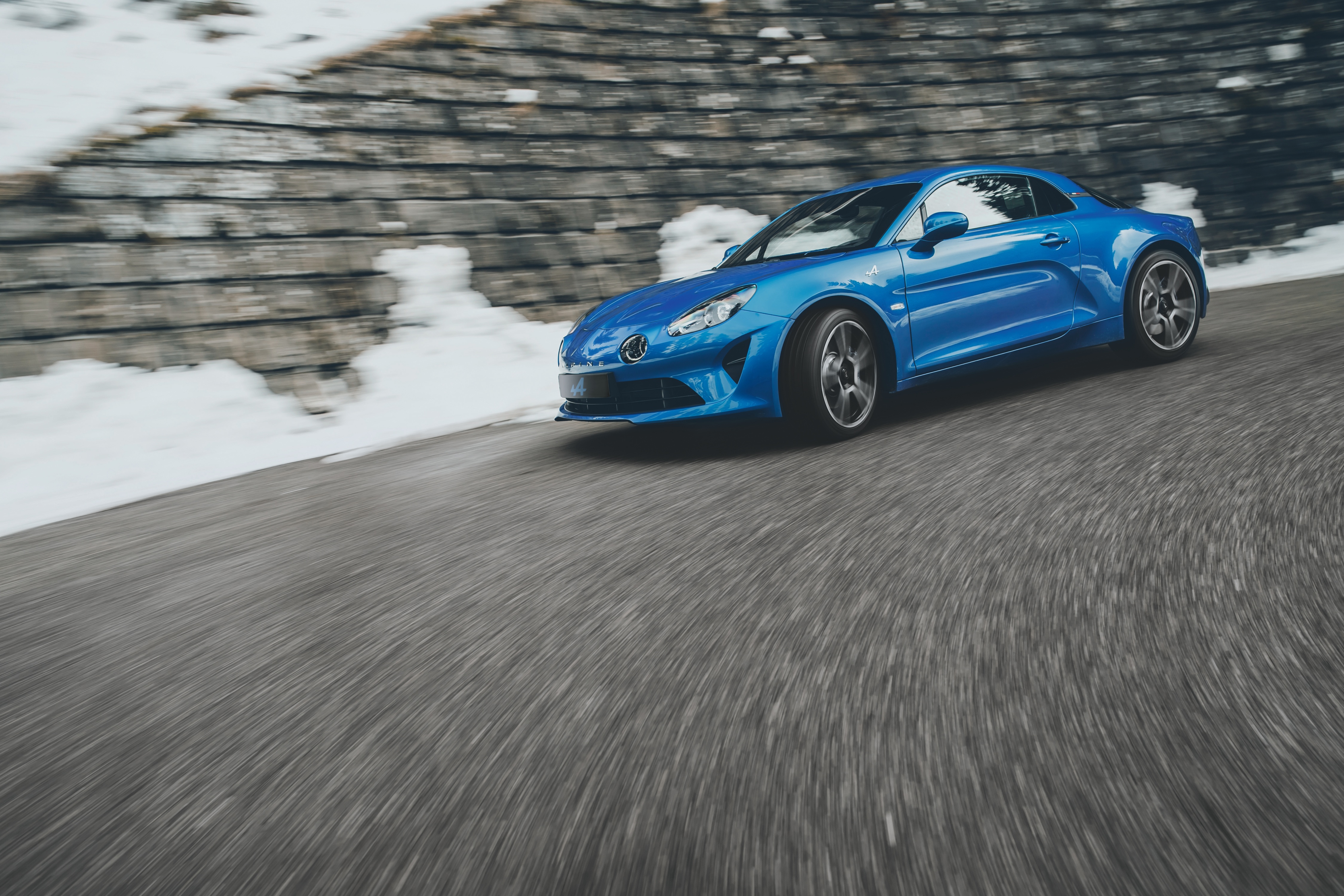
Here’s what two of the expert VDI Awards judges had to say about the A110:
Marc Noordeloos, freelance, USA: “The Alpine A110 is a superb Gallic gift to a world overrun by SUVs. It’s a light, agile and focused, back-to-basics mid-engined sports car. Please may we have more automobiles like the A110 from other manufacturers?”
Christophe Congrega, L’Automobile Magazine, France: “A very, very light car, with extremely good suspension geometry, and soft settings that give incredible agility and fun to drive capability… it’s so easy to play and slide, and control the Alpine, with superb comfort and grip, even on wet or bumpy roads, The return of forgotten pleasure…”
Runners up:
- Ford Focus
- Lamborghini Urus
- BMW 7 Series
- BMW 3 Series
- Rolls-Royce Cullinan
- Jeep Wrangler
Innovation of the Year
Whether hardware or software, engineering or computing, this category recognizes innovative ideas that advance and enhance vehicle dynamic setups.
Winner: ZF sMotion
Comfort and the progression towards autonomous vehicles are key factors of this year’s winner of the innovation category. ZF’s sMotion fully active chassis system is designed to reduce unwanted car body movements caused by potholes, bumps or bends, enabling the greater comfort that carmakers seek today and which is even more important for highly automated and autonomous driving.
With passengers not paying so much attention to the road ahead as they work or relax, whether today’s passengers looking at devices or tomorrow’s enjoying a mobile lounge environment, they become much more aware of car body movements, which can create motion sickness. Minimizing such movement helps maximize comfort and wellbeing. The system is not just for the increasingly autonomous future though, as in addition to increasing comfort for today’s passengers, sMotion can also help enhance vehicle handling and safety.
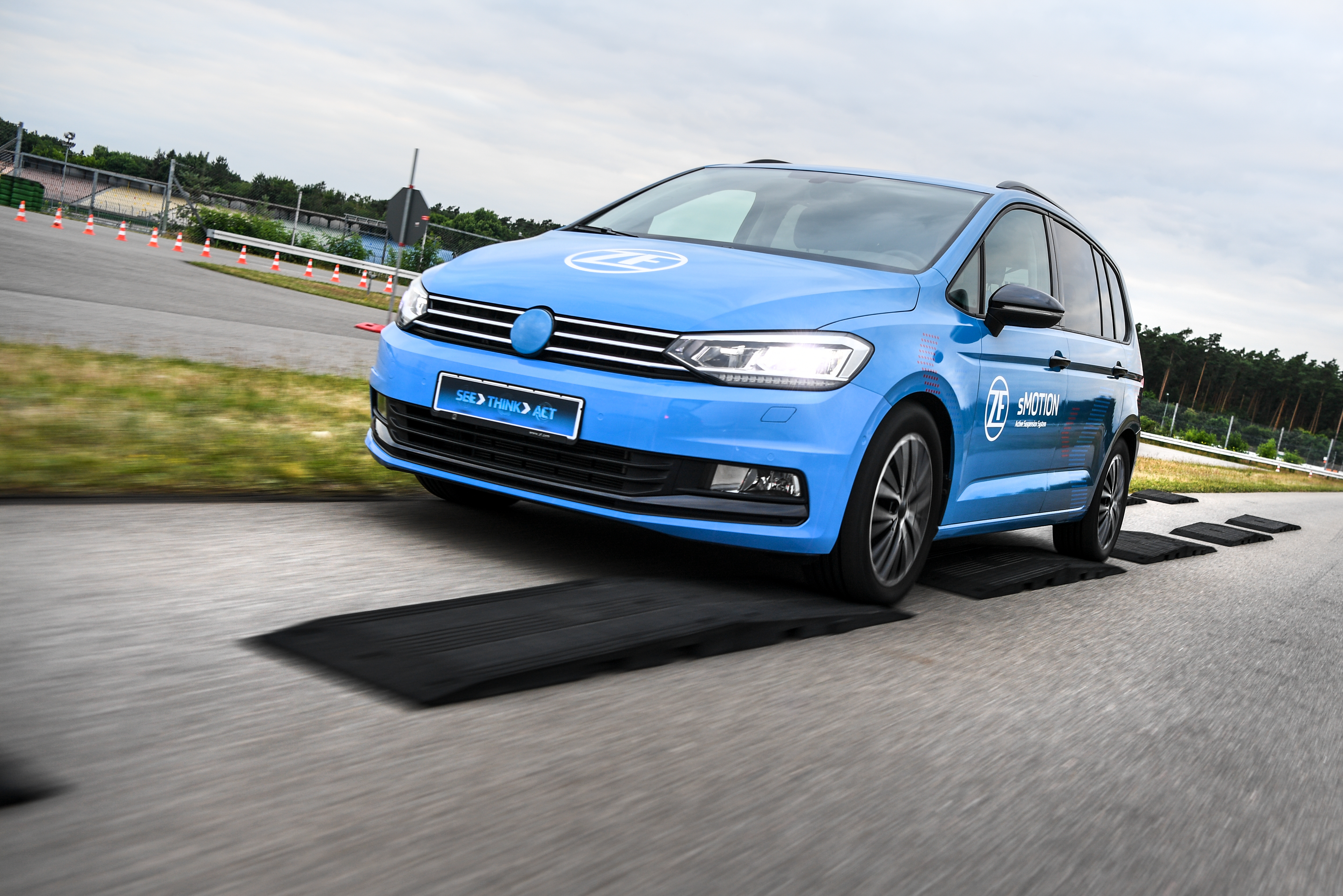
The chassis system builds on ZF’s Continuous Damping Control (CDC) technology with independent compression and rebound staging. This technology is designed to actively and continuously vary the characteristic compromise between hard (stability-oriented and dynamic) and soft (comfort-oriented) ride and handling.
However, sMotion adds to that technology, featuring a compact, external electric- motor pump unit with integrated electronics, which works as a bi-directional actuator on each wheel. This actuator can actively raise and lower the piston rod on each wheel individually, enabling improved control over all low-frequency car body movement – a function that ZF says is unique to this system.
For example, when cornering or changing lanes, the two inner wheels can be retracted and the outer ones extended, keeping the car horizontal and eliminating rolling and tilting. In another scenario common with urban traffic-calming measures, on roads with long stretches of bumps with different characteristics on the left and right or that occur only on one side, sMotion can help level the car and smooth out the ride. The system can also effective against the pitching forward or back during deceleration and acceleration.
Padraic Deane, managing editor, Automotive Publications, Ireland: “In theory, it should be capable of isolating practically all body movements from passengers”
The system can be further enhanced with predictive control if networked with environmental sensors such as road-scanning cameras, as it can then can detect rough road conditions in advance, such as potholes, and prepare the actuators. When travelling over the detected road defect, the technology actively keeps the affected wheel at the height of the road surface instead of allowing it to drop, as would be the case with a conventional shock absorber. sMotion also features dynamic ground clearance for each specific axle or side as well as for the entire undercarriage. A separate hydraulic control path can also compensate for higher-frequency bumps caused by minor unevenness in the road surface, such as manhole covers, transverse joints, rough asphalt or gravel.
“When it comes to the development of highly automated and autonomous driving, the chassis plays a key role,” says Dr. Holger Klein, head of car chassis technology, ZF. “By the time the autopilot takes over the wheel, all passengers want to be completely relaxed and unaware of the vehicle’s movement, regardless of what is happening on the road. Our sMotion fully active chassis system can help fulfil this desire. Passengers have the sensation of floating over bumps and hollows”
Highly commended: Mazda Enhanced G-Vectoring Control
Mazda has developed a second generation of its SKYACTIV-Vehicle Dynamics system. Named G-Vectoring Control Plus (GVC Plus), the vehicle dynamics control system will be rolled out across the entire Mazda range, with the updated Mazda CX-5 being the first to feature the new technology.

The original GVC system, launched on the Mazda3 (Axela) model in 2016, was the first technology from the SKYACTIV-Vehicle Dynamics series to be released, and was also the world’s first control system to vary engine torque in response to steering inputs. The result, according to Mazda’s engineers, was integrated control of lateral and longitudinal acceleration forces, and optimized vertical load on each wheel for smooth and efficient vehicle motion.
The GVC Plus update uses the brakes to add direct yaw moment control, further enhancing handling stability. For example, if the driver of a GVC Plus-equipped vehicle steers out of a corner by returning the steering wheel to the center position, the system applies a light braking force to the outer wheels, providing a stabilizing moment that helps return the vehicle to pointing straight ahead.
The system realizes consistently smooth transitions between yaw, roll and pitch, even under high cornering forces, improving the vehicle’s ability to track sudden steering inputs and exit corners crisply and accurately. GVC Plus is also intended to offer a reassuring feeling of control when changing lanes on the highway and when driving on snow or other slippery road surfaces.
Runners up:
- Tenneco CVSA2
- ZF eLSD
- NXP
- AB Dynamics Flex-0
Dynamics Team of the Year
From developing dynamics innovations, to applying them to production vehicles, to good old-fashioned hard work, this category recognizes the work of dynamics teams around the world.
Winner: Lamborghini
The Lamborghini team has been busy of late, developing several new model variants and innovations. The most major development has been the launch of the Urus SUV, featuring all-wheel drive, torque vectoring, rear-wheel steering, air suspension and the world’s largest set of carbon ceramic disc brakes. Indeed the Urus was a strong contender in the Car of the Year category.
Lamborghini has also developed “next-generation” vehicle dynamic control, a series of technologies which have debuted on the Huracán vo, and further refine the Performante model. Key features include the new rear-wheel steering system, as well as the torque vectoring system working on the four wheels.
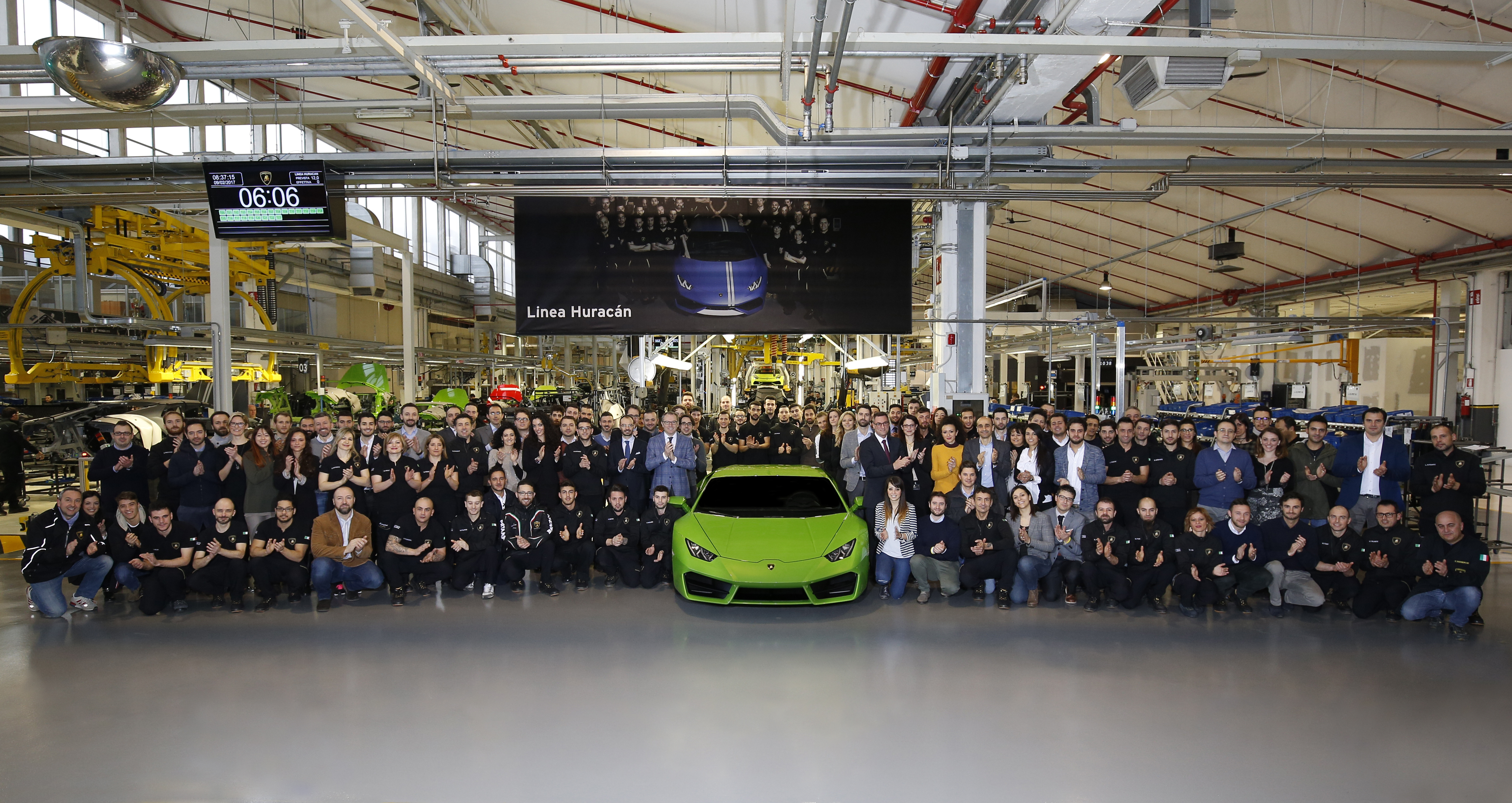
Even more important is the new Lamborghini Dinamica Veicolo Integrata (LDVI) system, a central processing unit that controls every aspect of the car’s dynamic behavior, integrating all of the car’s dynamic systems and set-up to anticipate the next move and needs of the driver, interpreting this into what Lamborghini says will be “perfect driving dynamics”. External conditions are determined through the active suspension and all-wheel drive grip estimation function. All of this information is analyzed and processed by the LDVI, which turns them into precise inputs for the vehicle dynamics systems. A ‘feed forward logic’ is implemented via the dynamic controller, which means the car doesn’t just react, but can intelligently try to ‘predicts’ the best driving set-up for the next moment.
The supercar maker has also developed an enhanced, more precise version of Lamborghini Piattaforma Inerziale (LPI), a comprehensive set of accelerators and gyroscope sensors placed at the car’s center of gravity. LPI monitors in real-time the vehicle’s dynamic attitude with regard to lateral, longitudinal and vertical accelerations, as well as roll, pitch and yaw rate. The magnetorheological suspension – also upgraded from the Performante spec – instantaneously adapts the damping following inputs from the LPI. The enhanced all-wheel drive and torque vectoring, combined with a new advanced traction control system, allows traction to be directed to a single wheel, as required.
The enhancements don’t need there, as the Lamborghini Dynamic Steering (LDS) system has also been tweaked to provide higher responsiveness in corners while requiring the lowest steering angles. Coupled with the rear-wheel steering, agility at low speed is assured, as is stability in high-speed cornering and severe braking.
Highly commended: BMW
The BMW team has developed and launched several new-generation models across its range over the past 12 months, such as the 3 Series benefitting from greater investment in dynamics hardware and the 7 Series featuring many new developments in terms of driving dynamics, with the aim of making it “the ultimate vehicle for luxurious driving pleasure”.
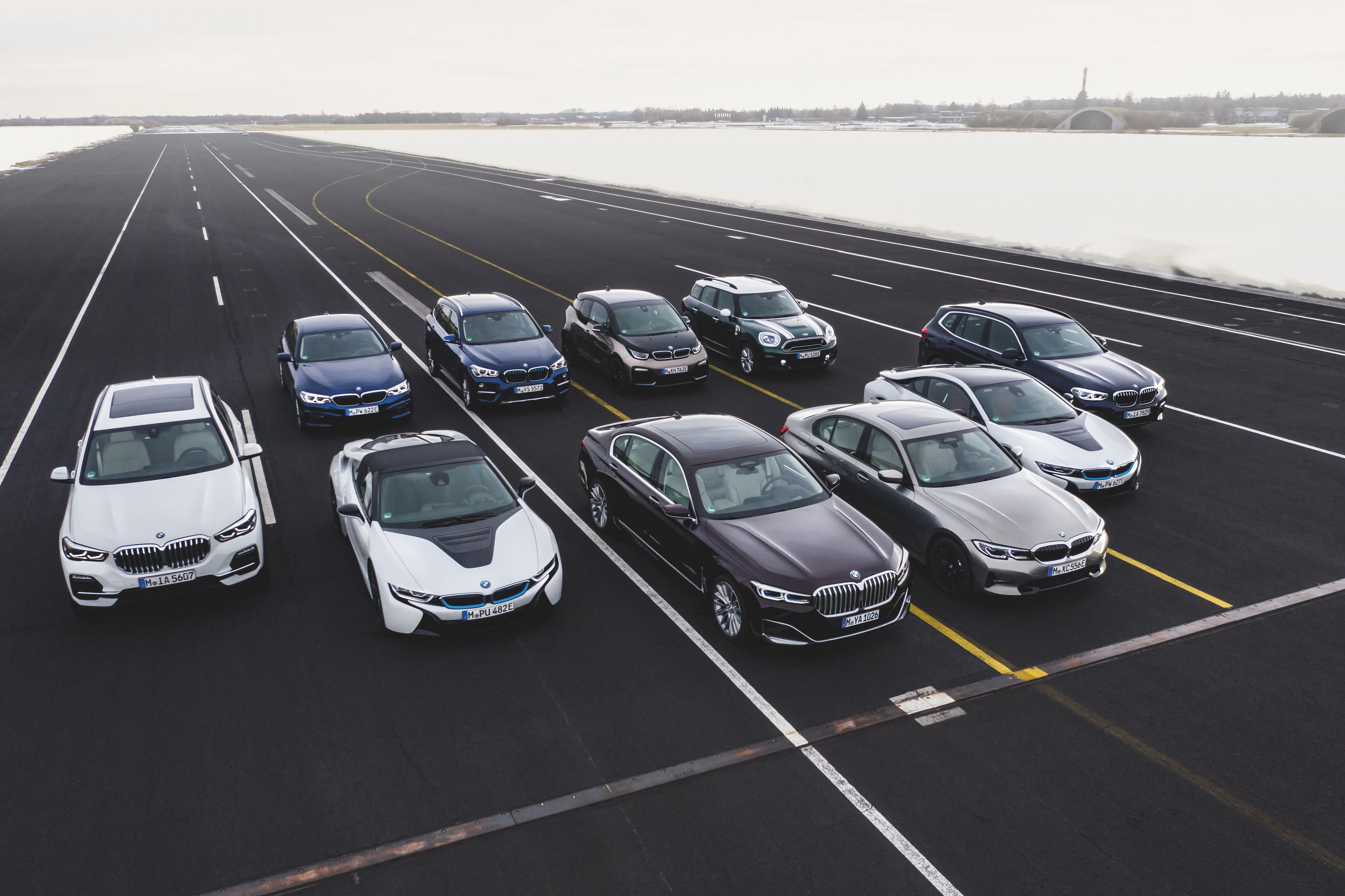
The X5 has also been re-engineered, with its xDrive intelligent all-wheel drive system having a more efficient control system and rear-wheel bias as standard, while the differential lock at the rear axle provides enhanced agility, traction and directional stability when accelerating out of corners and in other dynamic driving situations. Dynamic Damper Control with electronically controlled dampers is standard, with new chassis systems available for the first time for an BMW X model including two-axle air suspension offering ride height adjustment of up to 80mm, and integral active steering.
Amid further work to the i3, i8 and 8 Series, a new Z4 has also been launched, with an extremely high rigidity of the body structure and chassis mountings, intelligent lightweight design and optimised aerodynamic properties providing a sound basis for agility, dynamic performance and precise handling. The new design of the front and rear axles benefits not just the car’s sporty on-road prowess, but its ride comfort too.
Runners up:
- Mazda
- Audi
- GM
Development Tool of the Year
Winner: MegaRide Simulation pack
In 2018 the startup company MegaRide (a spinoff of University of Naples) launched a modular system to enhance real-time driver-in-the-loop (DIL) simulation for tire performance and vehicle setup optimization, with a view to helping automotive and motorsport companies improve safety and performance. The company may be new, but it is reporting success, having already had its systems implemented in the vehicle and tire development programs of several tire manufacturers, as well as the simulation systems of several motorsport teams ranging from F1 to formula E, MotoGP to DTM – and now a VDI award.
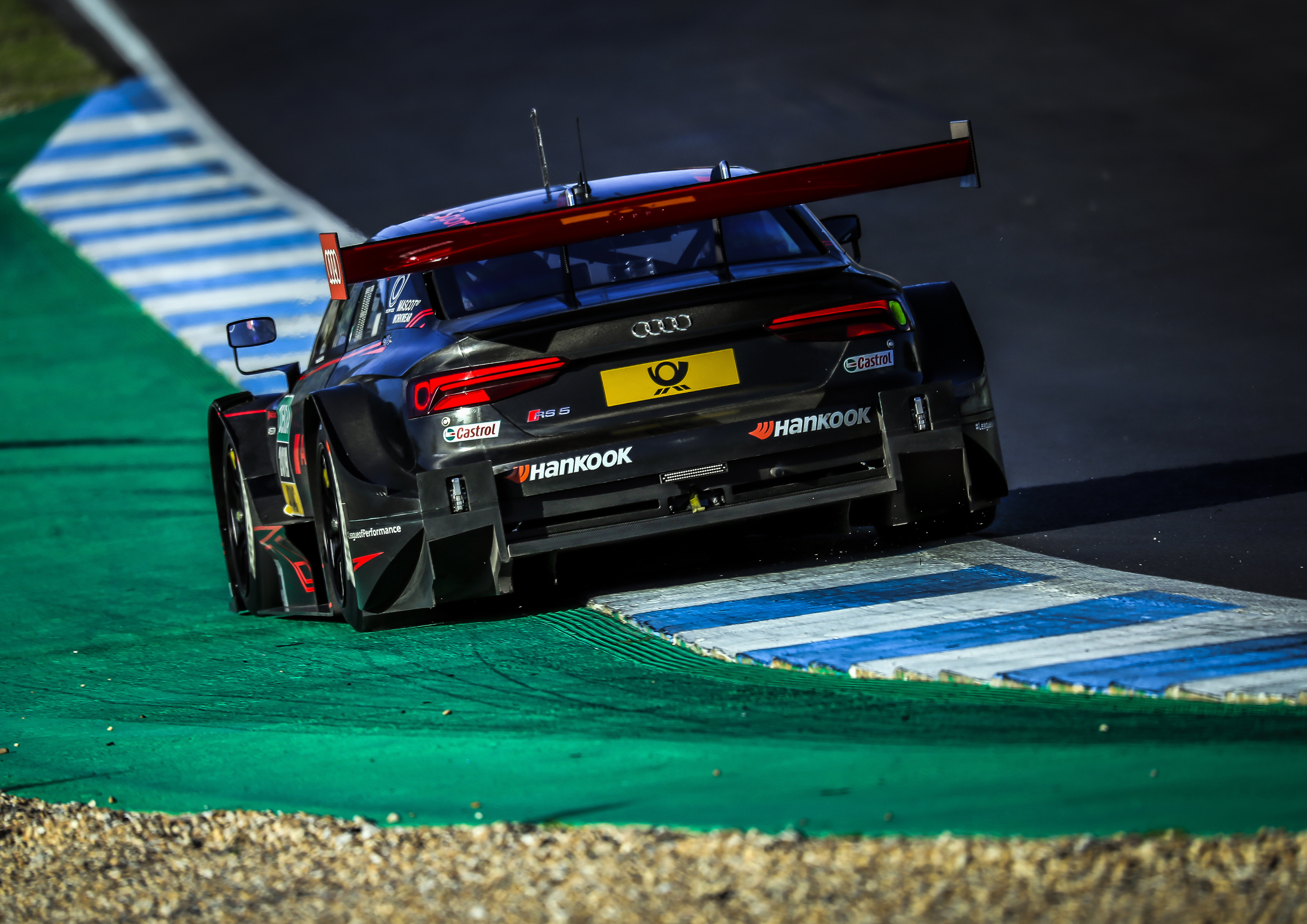
DIL simulators are certainly useful, especially with the real-world testing limitations and costs of motorsport, but if the theoretical limits applied in the system are not accurate, then the drivers’ sensations and feeling of the car setup, as well as their responses to the model and feedback to engineers are not truly representative of the real world.
To help solve this issue, the MegaRide pack comprises three main elements to enhance simulation: a physical thermal model to predict, in real-time, the temperature of different tire layers; a formula that takes into account tread wear phenomena, road roughness, compounds viscoelasticity and grip/temperature relationship; and a multi-contact tire/road ‘envelope’ model, developed to enhance the reliability of the drivers’ feeling in driving simulations, reproducing the ride dynamics caused by curbs, bumps and road roughness.
This cooperation between the models in real-time simulation environments increases the level of reliability and physicality of testing sessions performed using driving simulators and vehicle dynamics platforms.
Padraic Deane, managing editor, Automotive Publications, Ireland:“This is a complete modular solution designed to satisfy the requirements of vehicle manufacturers, tire developers, dynamicists and race engineers alike. It delivers to already thriving trades, increased levels of reliability and physicality of testing sessions which in turn feed in to relevant vehicle dynamic improvements in tire temperature, wear, and road contact dynamics.”
Highly commended: Ansible Motion and IDIADA (joint second place)
Ansible Motion – ADAS dynamics testing simulator
A simulator has been developed by Ansible Motion that is intended to help car manufacturers better understand how drivers will cope with and respond to the rising number of ADAS and autonomous (AI) automotive technologies in a safe and repeatable laboratory environment.
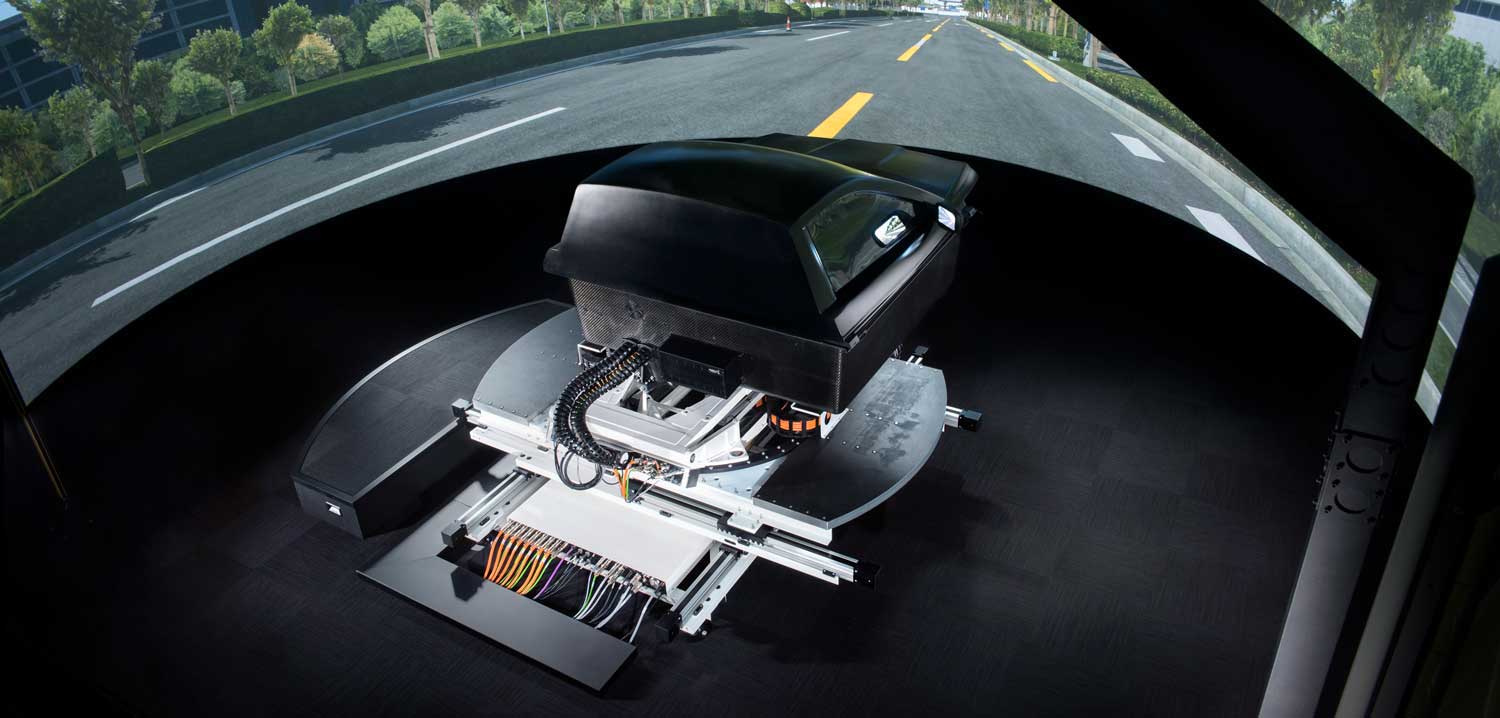
With the ability to create and explore scenarios in a short amount of time, Ansible Motion’s team claims that the simulator can enable engineers to conduct experimental variations that might consume 100 years’ of testing time in the real world, within a few months. Examples include the validation of autonomous emergency braking (AEB) systems that rely upon multiple sensor feeds and vehicle piloting logic algorithms to respond (in some cases, faster that human response capability) to various situations such as traffic and pedestrian intrusions.
To create the most immersive human simulation experiences, new features have been added to the simulation system, such as cabin environments that reflect OEM styling and human interaction features, and software connectivity that allows deeper environment and sensor simulation, coupled with Ansible Motion’s proprietary motion, vision, and audio environment that ‘tricks’ drivers and occupants into believing they are experiencing a real vehicle and its ADAS or autonomous technologies.
IDIADA – ‘Digital twin’
Software specialist, rFpro impressed with its highly accurate virtual model of Applus+ IDIADA’s proving ground in Spain, intended for use as a tool in virtual vehicle development, including vehicle dynamics applications. The “digital twin” of the facility can be used to accelerate the development of ADAS and CAVs (connected autonomous vehicles) by testing them in a fully representative virtual environment prior to undergoing validation on the track – including ‘ego’ vehicles, semi-intelligent swarm traffic, programmed traffic and pedestrians.
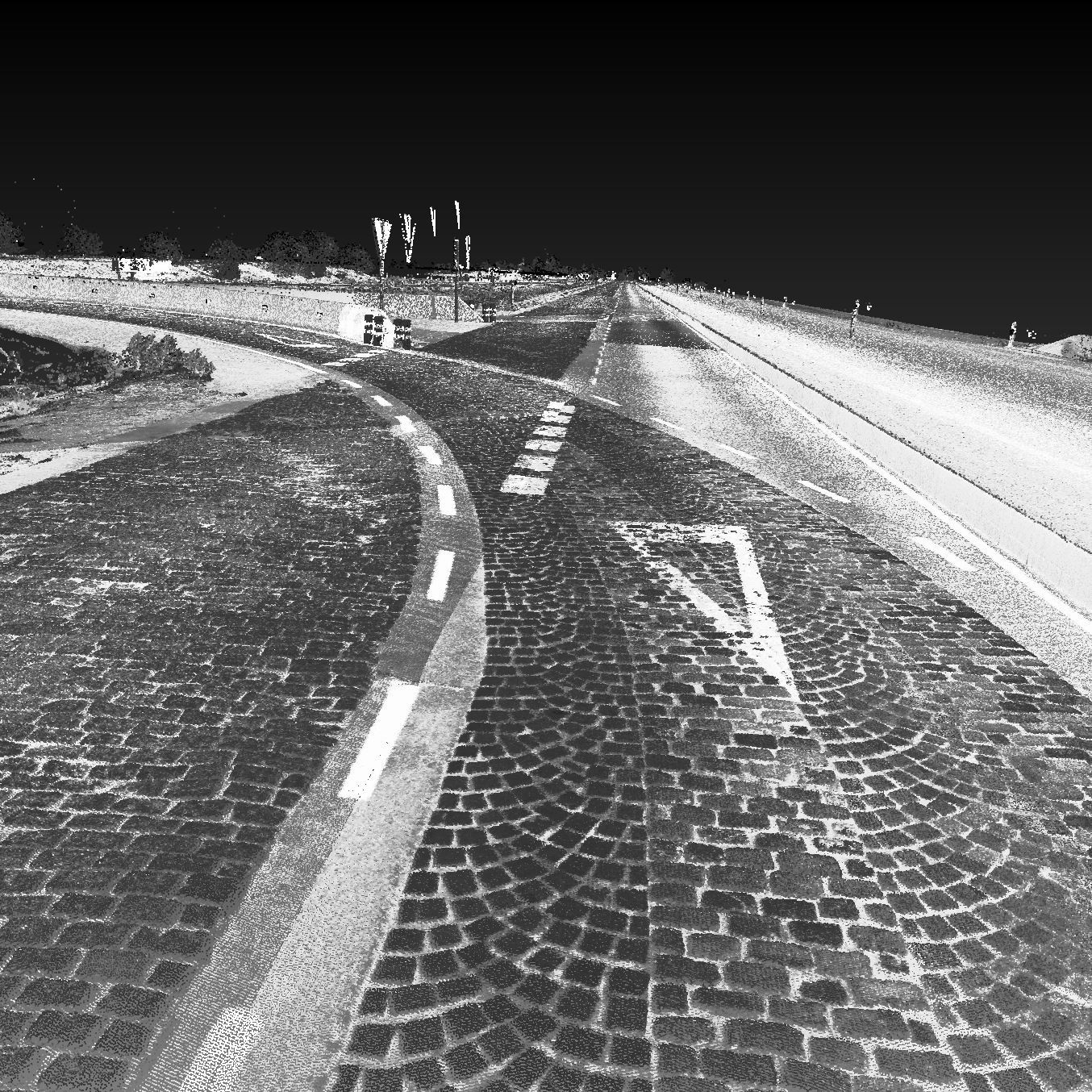
The system uses phase-based laser scanning survey data to generate create models with a claimed accuracy of around 1mm in Z (height) and in X and Y (position), with rendering quality of up to HDR-3 standard. In addition, a TerrainServer surface model enables high-definition surfaces to be simulated, which can capture detailed surface information to achieve a good correlation with the actual road surfaces at the facility. According to rFpro, this capability extends the use of the digital model into vehicle dynamics applications, allowing ride and secondary ride experiments to be conducted by real-time models on driving simulators.
Runners up:
- Mechanical Simulation2019.0 updates
- Kistler updated Correvit dynamics test system
List of judges
• Choi Joo-sik, Autocar Korea
• Alvaro Sauras Alonso, Autofacil and EVO, Spain
• Frank Markus, Motor Trend, USA
• Robert Bielecki, Oponeo, Poland
• Christophe Congrega, L’Automobile Magazine, France
• Nicol Louw, Car South Africa
• Carl Cunanan, C!, Philippines
• Hormazd Sorabjee, Autocar India
• Padraic Deane, managing editor, Automotive Publications, Ireland
• Tarcisio Dias de Araujo, Mecânica Online, Brazil
• Jim Kenzie, Toronto Star, Canada
• Nikos Kounitis, freelance, Greece
• Marco Marelli, freelance, Italy
• Oleg Vasilevsky, Auto Bild, Ukraine
• Marc Noordeloos, freelance, USA
• Sergio Oliveira de Melo, El Informador, Mexico
• Tomaz Porekar, Avto Magazin, Slovenia
• Brian Cowan, freelance, New Zealand
• Mohamad Sheta, Al-Masry Al-Youm newspaper, Auto Arabia, Middle East Auto News Agency
• Gábor Szécsényi, Az Autó and Retro Mobil, Hungary
• Jürgen Zöllter, freelance, Germany
• Adam Gavine, editor, Vehicle Dynamics International


